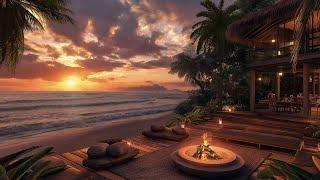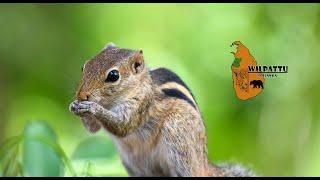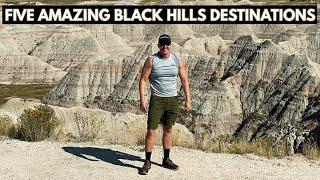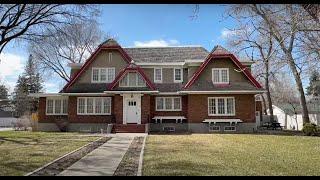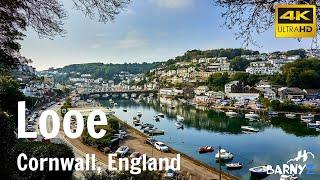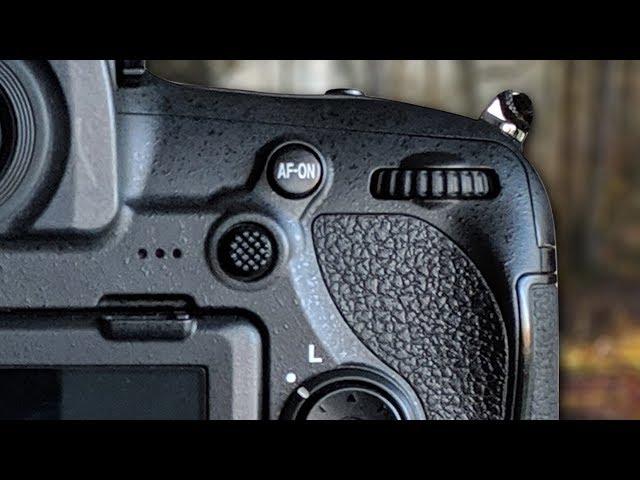
Camera Settings Wildlife Photography - Don't use Aperture Priority!
Тэги:
#wildlife_photography #wildlife_photography_tips #aperture_priority #bird_photography_tips #taking_pictures_of_wildlife #photographing_wildlife #wildlife_photography_for_beginners #wildlife_photography_settings #camera_settings #settings_for_wildlife #settings_for_wildlife_photography #d850_settings_for_wildlife #d500_settings_for_wildlife #nikon_settings_for_wildlife_photography #shutter_priority #photography_tutorial #photography_tips #bird_photography #exposure_triangleКомментарии:

Apologies for the extremely "casual" presentation style - I was super tight on time. What settings do you like to use?
Ответить
Auto ISO has really increased my enjoyability for photography. It's not 100% but I would say that its increased the likelihood I get the shot, or atleast get something I can edit. Atleast, I can use it until I understand it a bit better. But I can use Exposure compensation to fine tune. Great video and some really wonderful photos. Thanks.
Ответить
Thank you for your video which I must admit, I learnt quite alot from it especially with settings of the Aperture and Auto ISO in Manual Mode and the liberty of playing around with the Shutter Speed dial according to the situation. My question is that my D5 does not have the EV button to play with when set on Manual Mode. What can I do please?
Ответить
Full manual mode with auto ISO works well for me.
Ответить
very good explanation friend!!!!!
Ответить
Ppl should use whatever settings they want if they’re getting the results they want…
Ответить
Utter rubbish !
Ответить
I shoot Manual mode 100% of the time for all photography. With meter set to spot or mutispot for Landscape. I will use Average/Matrix meter mode when flash is used and setting my ambient light first then adjust my flash for just the right amount of fill flash using (auto)TTL flash meter. I always use TTL flash metering when subject distances are not known or constantly changing.
In Manual mode I can change any setting with the touch of a button or dial. And still achieve the results my camera can in Auto modes like Aperture,Shutter or auto A.S.A... YES A.S.A.. I 've been a pro photographer since 1977 and A.S.A.was the standard then and I see no reason to change now. I say 100 A.S.A. you say 100 i.s.o. the meaning is the same. It's ALL just photography and that's the fun part.

I disagree🤦
Ответить
Aperture priority comes into its own for fast moving animals where reaction times are critical. Like birding. You rely on the speed of a good camera to give the correct exposure so you can do everything else. By the time you cycle shutter speeds and check exposure etc, a bird can be gone. And that's not including BIF.
Problem with shutter priority is when something moves across different lighting like dark forest floor to extremely bright canopies, an aperture change of a number of stops can completely change the separation of the background and therefore the image.
Later cameras often have a minimum shutter option when you can dial in the lowest number you can get away with a sharp image for what you're after. Add auto ISO (with a max value) on top of that and you increase your chances of getting bankable shots.
Different methods for different types of shooting.

Too general, sorry. If you know what you are doing, AP determines the quality of your shot. Going full manual would be an option when you have tons of time, never happened to me with wildlife. SP theoretically sounds well, but the overall quality of the shot will easily suffer.
Ответить
True!
Ответить
What about iso noise when on auto iso..
Ответить
Auto ISO is for idiots.. iso -1000 or you don't take the picture.. every wildlife picture you take of animals who are moving fast is 1/2000 at least.. maybe the result is nicer at 1/50 in some cases but if you need to take 5000 shots to get 1 perfect one.. good luck with that. light is the key..
F2.8, iso -1000 and hoping the light is good enough to have a good shuttterspeed. if not, you just do not try to take a picture.

Been watching your videos and find them very helpful, im just getting into wildlife photography and have a entry level Nikon DSLR (D3500) also i have a Nikon AF-P 70-300 4.5-6.3 G ED lens. Can you suggest some basic settings for me to help with getting nice sharp photos. I do have a tripod, would i still use Shutter Priority with a tripod or only for handheld also can you recommend the best auto-focus and area mode. I am using auto-iso which is capped 3200. Thanx :)
Ответить
Just finished watching another video, from a pro wildlife photographer, banging on about how good aperture priority is for beginners at wildlife photography.
Set all my camera up ready to go out and try it.
And then watched this one lol.
Confused ain't the word 🤔.
This one did seem to make more sense though, but hey, what do I know ?.
Not a lot is the answer to that lol

Manual with Auto ISO is good stuff you are basically only limited by your cameras noise performance at higher ISO and will have to make shutter or aperture decisions based on that. And of course Exposure Comp comes into play as well.
Ответить
stfu. Av is the best. lol
Ответить
For some reason, my camera doesn’t let me set my iso to auto. It comes up with a message saying ‘this option is not available at current settings, or in the camera’s current state’.
Is there a reason for this?
I’ve searched online everywhere and I can’t get an answer anywhere!
Thanks for the tips :)

I use two custom settings, one with SP and the other with AP, and dial up or down depending on conditions. I attempt to use both for static wildlife and select in post which was best for the conditions. Mostly hand held so usually SP is best. Moving wildlife then always SP. ISO is set with a limit of 400.
Ответить
Yeah, I agree with some of your points but I have to say that Auto ISO is a NO GO for me when shooting birds in flight as the exposure meter of the camera completely buggers up what auto ISO is trying to do because the meter wants to expose for the large area of bright sky. People say "Oh well just move to spot metering and it will be fine", NO, you can't keep a spot meter dot on a bird in flight.
As for getting sharp images of birds in flight at 1/500th sec, well good luck with that unless they are heading straight at you, even a slow moving bird like a Little Egret will be blurred at 1/500th if its flying across your path, eg, right to left or left to right. My minimum shutter speed for a bird in flight is 1/1250 but if I can I can attain it then I prefer 1/4000 or better still 1/8000. Try shooting a Swallow, Swift or Martin at 1/500th and see what you get !!

Aperture or speed? Quite why everyone gets in a huff about it I don't know!
It all automated. All these "proffesionals" take thousands of photos. Good job 35mm has gone by the wayside. Because they will have as many duff images as mere mortals to be honest.
Plus tinkering with an image nowadays gives an extra hand

All lenses have a sweet spot, so aperture mode will beat shutterspeed mody any day in sharpness
Ответить
Auto iso, lol, so you shoot with auto..... Wildlife you should shoot with manual mode, manual iso.
Ответить
Very enlightening, from a 77 year old that has been photographing for 65 years. What you say, just makes sense.
Ответить
Dont use AV???? alot use AV with great results this is pants
Ответить
I agree. I use shutter priority
Ответить
Very good suggestions Robert!
Ответить
I honestly don't care about bokeh that much. I care about context and with totally blown out images I loose most information on the subject. Great video and tips, thanks man
Ответить
I found this video very frustrating. I think maybe you didn’t come across in saying what you were trying to explain, but much of what you said made no sense.
You said in aperture priority you have no control over the shutter speed. Firstly, by having it wide open, it will give you the fastest shutter speed. If you want to effect the shutter speed, change the aperture.
Secondly, you said it would be wide open anyway in shutter priority - only if you choose the fastest shutter speed. Manual mode is going to give you the more options, especially combined with auto ISO.
Personally, I shoot often in aperture priority with auto ISO limited to go no higher than 3200. This way, with my lens wide open, I will always get the fastest shutter speed which is nearly always what I want.

Wow this video has butthurt a lot of people lol 😂 Personally I think it's one of the best videos I've seen and while not preventing anyone from using Aperture Priority if they want to, it does make a great case for using Shutter Priority or manual in scenarios where they might have just gone with the generally accepted dogma. Thanks for sharing your ideas Rob 👍
Ответить
Personally I usually use manual with auto ISO, but the next option is definitely shutter priority. I NEVER use aperture priority for wildlife.
Ответить
I use aperture priority most of the time. I select the aperture depending on what I am after, soft bokeh, depth of field or a fast shutter speed. I am not restricted by low light here in Spain or indeed many other locations where I have photographed birds. Another factor is the sweet-spot of your lens, some are not quite so sharp when wide open. I believe Av has given me the best possible results over time.
Ответить
I believe AP auto ISO can be useful in close up work where the DoF needs controlling and detail is best kept by lower ISO. If you set the minimum shutter speed to 1/125th or 1/60th and have good VR, the ISO will be low in all but the lowest light level. This works for still subjects like flowers and resting insects. For mobile subjects like birds, mammals and flying insects I do use manual exposure with auto ISO.
Just discovered your channel and I like your helpful videos, including this one. It made me think this subject through. Thanks.

Complete nonsense..
Ответить
I don't agree, when I shoot wildlife macro I use aperture priority, I need full control over aperture, then ISO lastly shutter speed so your statement is not correct for me. If I'm close and taking portraits I again prefer aperture so I can make sure I get good separation or increase dof when wildlife come closer. For instance I'm photographing grebes at F4 for nice backgrounds then it dives and resurfaces close to me, I know at that distance I need F11 to get the head full in focus dial it in and shoot. My priority is dof so aperture priority is best no? Both setting are for different purposes and wildlife photography is diverse so each can be beneficial in different circumstances.
Ответить
To me it doesn't really matter whether you use shutter or aperture priority or manual. What matters is that you understand exposure, know your camera and can quickly adjust iso, shutter, aperture and use exposure compensation in the field as needed. You need to know when your camera will get it right and when your camera will struggle - such as a dark bird against a bright sky - no camera will work this out for you. That is where you have to understand exposure and understand your camera. The camera settings are not important - it does not matter how you get there but it is the picture you get that counts.
Ответить
Aperture priority - because a BIF can fly from bright to darker and vice versa at any time. Aperture priority handles this very well!
Few pro photographers use shutter priority for BIF, most use Av or Manual.
Using Av, I get wonderful pix with my Canon 7D Mark II with a 400mm L series lens.

Most of the major successful wildlife photographers use aperture priority I switch between that and manual with auto iso.
Ответить
Hey! What lens did you use for those shots? Thanks
Ответить
Thank you Rob, for explaining how to shoot Wildlife Photography. I just recently shot some photos while at a safari. I notice that I was shooting at F8.0, 1/500, Auto ISO3200 on a Canon EOS Rebel T7. The lens I had was a Canon Zoom Lens EF 75-300mm f/4-5.6 (300.0m). My photos seem to turn out okay. But once I reduce the size to use them as wallpaper, I notice grain in my photos. Good tip, man! Manual Mode or Shutter Priority.
Ответить
I use manual mode with auto iso
Ответить
Thank you Rob, it is so clear and simple
Ответить
Manual, yes. Shutter priority, never. Aperture priority, especially wide open, will always select the fastest possible shutter speed for the light.
In shutter priority, if there is more light the lens will stop down instead of I creasing shutter speed. A waste of light!

Some good tips , I’m always manual with auto iso unless I plan to take birds in flight then I set the iso . Gem
Ответить
Thank you so much for this informative video,I find your opinions very helpful.
Ответить
Well you completely missed the point of using the aperture priority.... it is used to ensure that you control the depth of field DOF. When you photograph a flying bird which normally have more of an erratic movement, you want to be in the safe zone where the image is in focus, giving yourself a room to ensure image sharpness. No one in the right mind shoots at f2.8 simply because of the shallow DOF. You would let your ISO be controlled by the camera to ensure good exposure. What you have shown us are photos of still subjects or moving slowly, and not flying birds, you can shoot easily with either aperture or shutter priority. Everything being equal, i.e. distance to subject, sensor size, etc.. shooting with a stopped down aperture gives you deeper DOF i.e. sharp images
Ответить
I shoot manual myself but I know plenty of professionals who use aperture priority + exposure compensation with great results.
Focus on making videos showing what works for you versus telling people what they are doing is wrong.

I think it depends on the individual and the situation. As a beginner A-priority works well. Plus some lenses don't always perform to their best when wide open, so it means finding the optimal f stop. Plus, shooting a perched bird requires less focus on shutter speed than aperture. Therefore, your comments are valid but only in certain circumstances i.e. birds in flight and moving wildlife. I will try to use S-priority based on this vid and see how I get on, to compare.
Ответить
